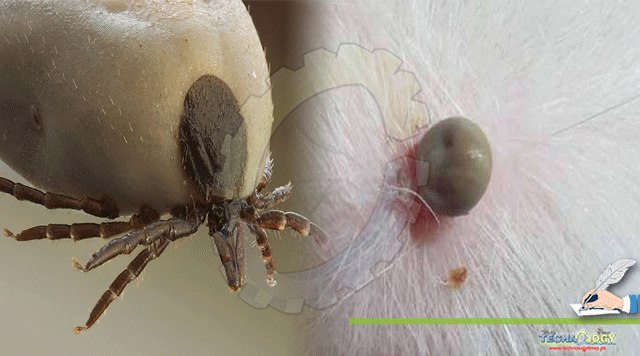Ticks are tiny arachnids but pose serious veterinary and medical problems both for livestock and its owners. Their success story lies on blood meal which is their nutritional need and reproductive requirement. Ticks have great reproductive potential as one tick may lay more than 20,000 eggs during her life and can survive starvation of 22 years.

By Prof Dr Abdullah G Arijo
The livestock sector represents a significant part of the global economy, particularly in the developing world. The livestock provides energy, food, raw material, and manure for crops. It is, therefore, not surprising that the livestock sector, especially the dairy sector, has emerged as an important economic source for a vast majority of the rural population and a target for agribusiness in the dairy, meat, and various other products in the processed foods sector (Jabbar et al., 2007).
Camel is a potential animal for dessert, arid, semi-arid and mountainous areas of the world. It provides transportation, wool, hairs, hides, milk, and meat to humans for consumption and making byproducts such as carpets, shoes, jackets, etc. (Younas and Iqbal, 2001). There are 24 million camel productions in the world and Pakistan ranked 8th regarding camel raising countries in the world (FAO, 2010). According to the Economic Survey of Pakistan (2016-17), the camel population in the country is 1.1 million with milk production of 885 tones. In Pakistan, the majority (41%) of the camel population (one-humped) was found in Balochistan followed by 30%, 22% and 7% in Sindh, Punjab and Khyber Pakhtunkhwa, respectively (GOP, 2017).
Camel belongs to the genus Camelus in the family Camelidae even-toed ungulate mammalian having distinctive humps on back. The height of the camel ranges from 1.8 to 2.0 meters having 400 to 600 kg body weight with 15 months gestation period (Yam and Khomeiri, 2015).
There are 4 camel production ecological zones in Pakistan. Coastal mangroves consist of Karachi, Badin and Thatta districts, Sandy deserts consists of Thar, Cholistan and Thal in Punjab and Sindh, Mountainous tracts consist of Dera Ghazi Khan and Dera Ismail Khan district in Punjab, the whole province of Balochistan and Khyber Pakhtunkhwa, respectively. Irrigated plains consist of all Punjab and Sindh irrigated districts (Qureshi et al., 1993).
In Pakistan, 2 kinds of camel breeds i.e. Riverine and Mountain camels were found (Khan et al., 2003). Earlier studies on Isani and Baluch (2000) and Younas and Iqbal (2001) described that overall twenty breeds of camel were found in all 4 provinces of Pakistan, the distribution of camel breeds viz., 4 breeds (Sakurai, Sindhi or Larri, Kharai, Dhatti/Thari) in Sindh, 7 breeds (Rodbari, Pishin, Lassi, Makrani, Brahvi, Kharani and Kachhi) in Balochistan, 5 breeds (Kalachitta, Cambelpuri or Mountainous, Marecha or Mahra, Brella or Thalochi and Bagri or Booja) in Punjab and 4 breeds (Maya, Gaddi, Khader and Ghulmani) in Khyber Pakhtunkhwa.
This animal is multipurpose that tolerates its life in the harsh and hot atmosphere, even in that environment it implements very well therefore it is known as the ship of desert (Asim et al., 2013). It is considered a potential animal because it serves several people, particularly in arid, semi-arid, mountainous and deserted zones. Furthermore, the camel provides meat, milk, hairs, hides and transport facilities. She camel of good health and having proper nutrition may produce 15-20 litres of milk per day, Moreover, she-camel milk has a greater shelf life because it contains an increasing number of protein contents which preserve it from some pathogenic bacteria. That’s why it is more convenient to be marketed even though in high temperatures with basic hygienic tools (Yaqoob and Nawaz, 2007).
Production of the camel is affected due to several ecto and endo-parasites. Among ectoparasites, ticks have been recognized as the notorious threat due to severe irritation, allergy and toxicosis (Niyonzema and Kiltz,1986). Ticks are among the most important vectors of diseases affecting both humans and animals worldwide. They are currently considered to be second to mosquitoes as a vector of human infectious diseases in the world. It has been reported that 80% of 1,200 million cattle are at risk for (TTBDs) causing a global annual loss of US$7,000 Million (McCosker, 1997). There are more than 850 species recognized with approximately 180 in the family Argasidae (soft ticks) and the others in the family Ixodidae (hard ticks). Ticks transmit a greater variety of protozoan, bacterial, and viral pathogens than any other Arthropod vector group. They also cause direct damage due to paralyses and toxicosis, irritation, allergy and contribute to a general loss of condition resulting in significant economic losses (Jabbar et al., 2007).
Camels suffer from infections with ticks, which feed on open wounds or live in the nose, attached to the legs, head and the underbelly. Most commonly in the perineal, inguinal, and axillary regions, between the toes and around the ears, eyes and lips. Tick infections are common in camels. In long-haired camels, ticks will shelter anywhere in the coat and, especially during the winter month; their presence may be largely unnoticed until clinical signs of irritation or debility develop. They result in swellings and small wounds in the skin from the bites. The tick feeds on blood and infections result in loss of blood, weight loss and weakening of the animals. The irritation resulting from the attachment of ticks causes distraction and loss of production. Hides are damaged. Traumatic injuries are caused by tick bites, which themselves may seem small.
Prevention of tick bites and transmission of tick-borne pathogens requires the use of molecules that target physiological processes crucial to both tick and pathogen survival (Krober and Guerin, 2007). Although all ticks are obligate blood-feeders, 90% of them are specific to a particular host that normally does not include humans and their livestock (James and Oliver, 1989).
Ticks are known to affect health and production of the infested livestock and there is great need to prevent and control the tick infestation to improve the production potential of affected animals.